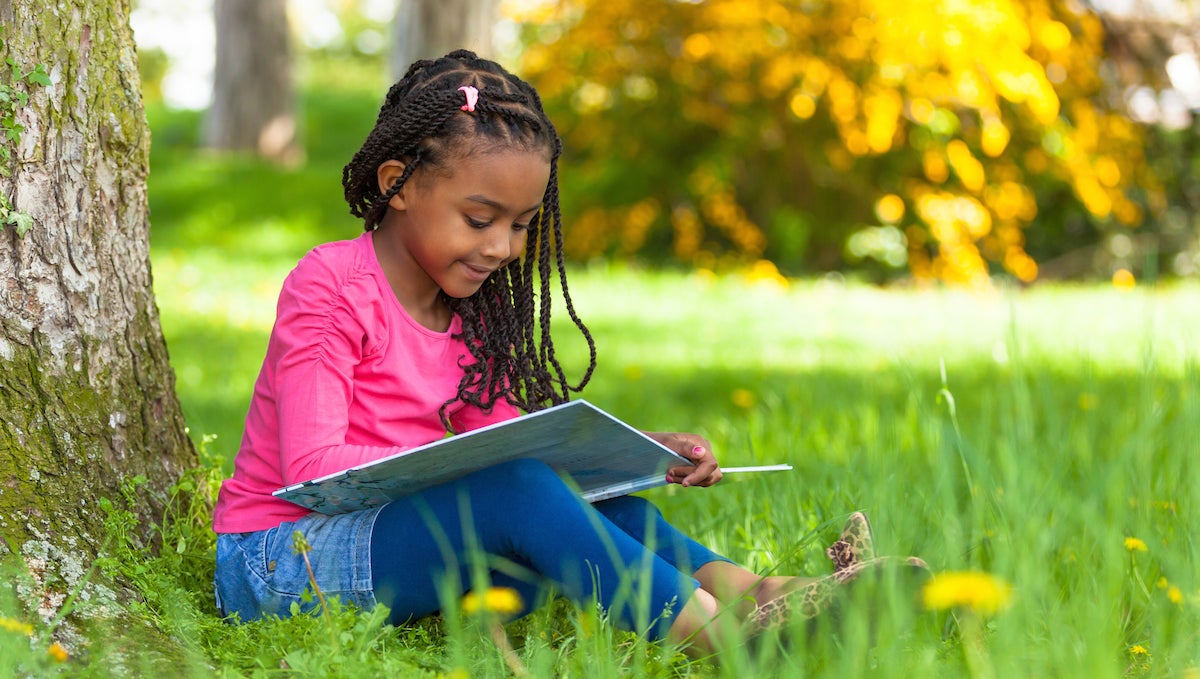The urgent need for diverse children’s books
 Copyright: Samuel Borges Photography via ShutterStock) " title="shutterstock_137845085" width="1" height="1"/>
Copyright: Samuel Borges Photography via ShutterStock) " title="shutterstock_137845085" width="1" height="1"/>
(Copyright: Samuel Borges Photography via ShutterStock)
Today, in the 21st century, there continues to be lack of literature that reflects our country’s diversity. I don’t just mean racial and ethnic diversity. I’m also talking about a diversity of languages, family structures, religious perspectives, sexual orientation and identifications, social class and disabilities.
There is a lot of talk around the urgency of building up reading skills these days. Thoughtful discussion of what children are reading is equally important.
Our son should have an opportunity to see himself and his peers in books he reads. Books are a wonderful opportunity for young people to identify with who characters are and what challenges or humorous experiences they face. It’s an opportunity to think about people and experiences different from our own.
Finding books with a person of color as the main character are hard to come by. Even more challenging is finding books where characters have a disability, or families are happily living in a single-parent home. Lives like this aren’t rare, and yet books don’t always touch on those realities.
Our son should know that while there are many things to appreciate about the world we live in, it’s also a world that has some troubling history. Whether it be racial segregation, sexism, or ageism, it’s important to recognize those histories as truths that inform our present.
Kids should know about ways people have stood up to challenges. That even when things are daunting, ordinary people have come together to stand up against those challenges.
Don’t run away!
Once you have yourself a stack of diverse books, the journey has just begun. Expanding the diversity of the books we read will be ineffective if we run away from the complex and important questions that can come out of them.
Our son loves baseball, and that’s led to lots of books about the sport in our house, both fiction and nonfiction. One of those, “Just as Good: How Larry Doby Changed America’s Game,” is about the first black player in Major League Baseball’s American League. The book raised questions for our son about why black players were not part of the MLB from the start. It led to a conversation about discrimination and Jim Crow laws.
These aren’t easy questions to handle, but we focus on giving him an opportunity to ask questions and responding honestly as possible, even if that means telling him we don’t have an answer.
Re-reading the “classics”
Introducing a broader range of books doesn’t mean you have to toss out the “classics.” Timeless books like “Bridge to Terabithia,” “Harriet the Spy,” or “Charlie and the Chocolate Factory” carry messages of friendship and being an honest, good person. These books also teach lessons about being a strong young woman, rural life and social class. Sometimes, re-reading classic books just means reading them with a different pair of glasses on, and asking questions about characters and themes that you might have missed the first time around.
Where to go
Your local public library is a key asset, of course, but also consider local bookstores like the Big Blue Marble Bookstore, The Color Book Gallery, or muesum bookstores. The We Need Diverse Books website is a great resource, too.
What to read
I haven’t read all of these books I am about to suggest, but they come highly recommended. Feel free to leave a comment with additional suggestions.
“Bayou Magic” by Jewell Parker RhodesMaddy is a young girl on the Louisiana coast who is visiting her grandmother for the summer. Maddy learns about the threat oil rigs represent to the livelihood and health of the black community on the bayou.
“Beyond Magenta: Transgender Teens Speak Out” by Susan KuklinFrom the publisher: Author and photographer Susan Kuklin met and interviewed six transgender or gender-neutral young adults and used her considerable skills to represent them thoughtfully and respectfully before, during, and after their personal acknowledgment of gender preference. Portraits, family photographs, and candid images grace the pages, augmenting the emotional and physical journey each youth has taken.
“Brown Girl Dreaming” by Jacqueline WoodsonFrom the publisher: Raised in South Carolina and New York, Woodson always felt halfway home in each place. In vivid poems, she shares what it was like to grow up African American in the 1960s and 1970s, living with the remnants of Jim Crow laws and her growing awareness of the Civil Rights movement.
“The Upside Down Boy: El Niño de Cabeza” by Juan HereraFrom the publisher: The Upside Down Boy is award-winning poet Juan Felipe Herrera’s engaging memoir of the year his migrant family settled down so that he could go to school for the first time.
WHYY is your source for fact-based, in-depth journalism and information. As a nonprofit organization, we rely on financial support from readers like you. Please give today.

